Descent into chaos
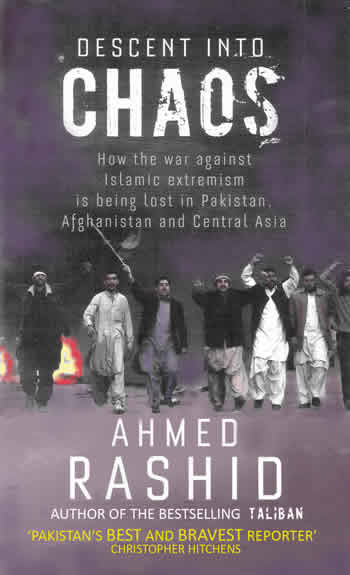 Rashid, A. Descent into chaos. Allen Lane, Penguin Books, 2008. pp 477, RRP $65.
Rashid, A. Descent into chaos. Allen Lane, Penguin Books, 2008. pp 477, RRP $65.More than a century ago the contest between the empires of Britain and Tsarist Russia for supremacy in Central Asia was a subtle conflict of spies and diplomats – rather than open war between their armies. The prize then, as it is today, was Afghanistan. As the world’s front line of terrorism, Afghanistan is a very dangerous place – a place in which the Australian military is currently involved. The protagonists are the Taliban, al Qaeda, Pakistan and the NATO-led international security force predominantly led by the US military, but with Australia and other nations playing a part.
Compelling, challenging
In his compelling but challenging and at times controversial book, Descent into chaos, the Pakistani journalist Ahmed Rashid meticulously analyses the Afghanistan and Central Asian conflicts, recounts their recent history and background and strongly suggests that the war against Islamist extremism is being lost in Pakistan, Afghanistan and Central Asia. The mid-2009 humanitarian crisis and military confrontation with the Taliban in Pakistan’s Swat Valley, predicted by an Australian counter-terrorist consultant for the Obama White House and pre-empted in Rashid’s book, now presents a real and present threat to the security of Pakistan’s nuclear arsenal in Islamabad. In accord with this notion, Rashid’s chapter on “al Qaeda’s bolt hole” maintains that FATA (Federally Administered Territorial Areas) in Pakistan had become “terrorism central”. They provide training and manpower for the insurgency in Afghanistan and thus push forward the Talibanisation of the North West Frontier Provinces (NWFP), while guarding the sanctuaries of al Qaeda for international terrorist training. Almost all latter-day al Qaeda plots around the world had FATA connections, from the 9/11 Twin Towers in New York, the London Underground and the Madrid train killings to the Bali bombing.
Australia commits
The Australian government recently announced an increase in the Australian military commitment in Afghanistan. At that time there were 1090 Australian military personnel in Afghanistan participating in Operation Slipper – Australia’s contribution to the NATO-led international security assistance force fighting international terrorism in Afghanistan. All this is within the context of the US-led coalition against terrorism in the broader Middle East. Accordingly, Rashid’s book could be said to be modern Central Asian and Australian history in the making. As such, the book provides a valuable understanding of the reasons for Australian deployment in Afghanistan.
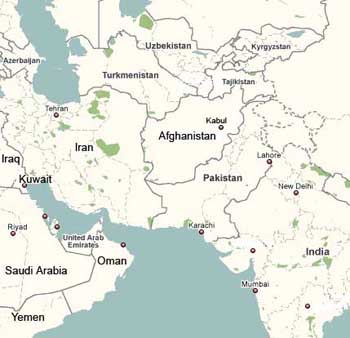
Central Asia
The location for the analysis in Rashid’s book is Central Asia: the five independent but dictator-led states of Kazakhstan, Kyrgyzstan, Tajikistan, Turkmenistan, and Uzbekistan as well as Pakistan, Afghanistan, India and, to some extent, Iran. He maintains that years after the 9/11 attack in 2001, the US-led war on terrorism has produced a far more unstable world. The US invasion of two Muslim countries, Iraq and Afghanistan, billions of dollars, armies of security guards and new technology have so far failed to contain the original Islamist organisation while the al Qaeda leader, Osama bin Laden, is now a global inspirational figure and still at large.
Military regime
Pakistan’s military regime led by President Pervez Musharref has also undergone a bloody meltdown. In 2007 he suspended the constitution, sacked the senior judiciary, imprisoned 1200 lawyers and muzzled the media. Musharref’s plunge from hero to villain was compounded by the assassination of the larger than life Opposition leader, Benazir Bhutto, in December 2007. Rashid claims the future of the US, NATO and the European Union are at stake in Central Asia. How can NATO survive if the Taliban is not defeated in Afghanistan or if bin Laden remains at large?
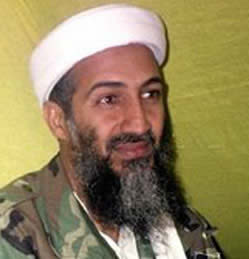
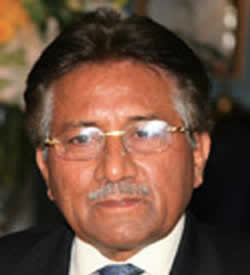
Al Qaeda leader Osama-bin-Laden (left) and Pervez Musharref, Pakistan President 1999-2008.
At least the Afghanistan President, Hamid Karzai, was elected by a democratic Loya Jurga that mobilised a national response and, in so doing, resisted the influence of the hitherto all powerful billionaire war lords. But there is an international hesitancy to commit to a cause perceived by many as led by US incompetence, incoherence and complicated strategies.
For instance, there is a perseption that Bush, on election, thought the Taliban were an all-girls “Pop group”. In Pakistan the threat is more much more concrete and palpable. Pakistan has a nuclear armed military and an intelligence system that has promoted Islamic extremism as an intrinsic part of Pakistan’s foreign policy for nearly four decades.
Military buildup
Ninety per cent of the $10 billion in aid that the US has provided to Pakistan since 9/11 has gone to the military, rather than to national development. Pakistan with a population of 175 million is the sixth largest country in the world and its society is riddled with deep ethnic, social and economic fissures. The Pakistan Army, particularly through the agency of its very own but sinister Inter Services Intelligence Directorate (ISI), has backed the Taliban and encouraged thousands of youngsters, especially through the proliferation of madrassas (12,000 in Pakistan) teaching Islamic extremism, to fight and die for the Taliban.
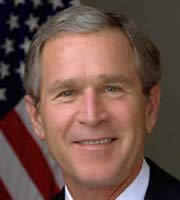
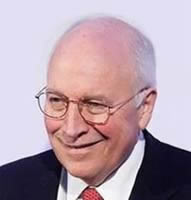
Four horsemen? George W. Bush President USA 2001-2009 (left above) and Dick Cheney, Vice President 2001-2009.
Donald Rumsfeld Secretary of Defence 2001-2006 (left below) and Paul Wolfowitz, Deputy Secretary of Defence 2001-2005.
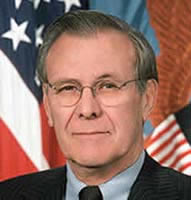
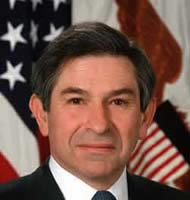
“Marshall Plan”
The ISI also mobilised Pakistani terrorists to fight in the Kashmir insurgency against India, before despatching them to Afghanistan. Ending the “failing state” syndrome in Central Asia would require nothing less than a Western-led “Marshall Plan” for the region. However, G.W. Bush, aided and abetted by Rumsfeld, maintained that US troops are not to be used for nation building.
Three disturbing themes run through the book. First is the evil, sinister and two-faced behaviour of Musharref in his nefarious dealings with the US and his duplicitous arrangements with the ISI and the Pakistan army. The second is the absolute resistance of the Bush administration, particularly the “neocons” Rumsfeld, Chaney and Wolfowitz, to prevent any attempt at nation building in Central Asia: “it is either their way or the highway.” To some extent the neocons were the classic imperialists who use 9/11 to exempt themselves from American and international law. The third theme relates to the amount of money the US has lavished and wasted on this part of the world. In 2008 the US Defence budget, with a 1.37 million strong defence force, reached $647 billion. The wars in Iraq and Afghanistan were expected to cost more than $l trillion.
Bush steps down
The Bush era ended in 2008 and Rashid argues cogently that America is shattered, the US army is overstretched and broken, US credibility is compromised and the world is a far more dangerous place. There are full blown insurgencies in Pakistan and Afghanistan and al Qaeda has expanded around the world, very much funded by the drug trade of opium and heroin. Rashid calls it “drugs and thugs.” These drugs are derived from the poppy fields of Central Asia. The poppy provides opium, which is readily converted to heroin. The value of the Afghanistan opium crop in 2006 was $3.6 billion – all used to fund the Taliban and al Qaeda. In 2008 alone the US allocated $780 million to counter narcotics in Central Asia. PM Blair warned Karzai he would not deploy British troops to Helmand Province unless Karzai’s “friends” in the poppy fields were removed.
Well-documented
This is a well researched, multi-referenced, factual and stimulating book. It is to some extent a detailed, concentrated and challenging book, but at the same time it is a rewarding one. Muslim nomenclature is ever present but it is an informative book to read. Having read it, one has a more realistic appreciation of the challenges facing the Western world, particularly the US, NATO and the European Union. Australia is very much involved in all this although our current contribution, including 10 Army deaths and one action that resulted in an Australian Victoria Cross, does not rate a mention in Ahmed Rashid’s Descent into chaos.
